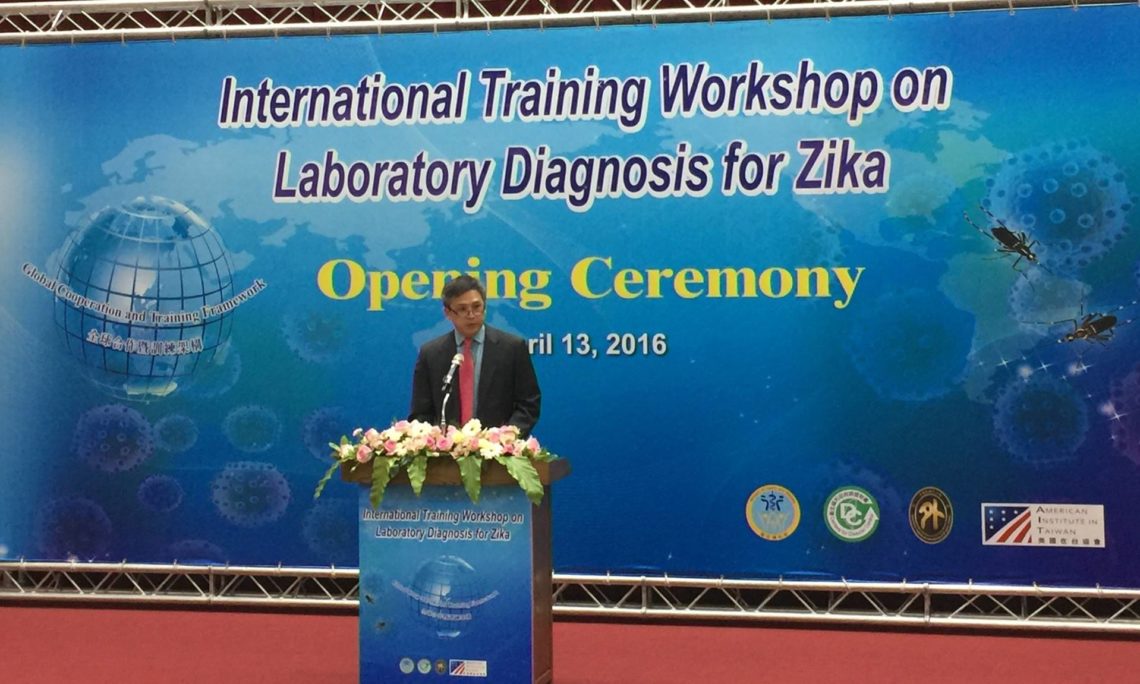American Institute in Taiwan (AIT) Director Kin W. Moy joined Taiwan Vice President-elect Chen Chien-jen, Minister of Health and Welfare Chiang Been-huang, and Deputy Minister of Foreign Affairs Bruce Linghu at the opening ceremony of the International Training Workshop on Laboratory Diagnosis for Zika on April 13, 2016. The three-day workshop features 24 participants from 12 countries from around the region and seeks to boost regional capacity to respond to the Zika virus threat. Participating laboratory experts and pathologists have travelled from Australia, Bangladesh, Burma, Fiji, Indonesia, Japan, Malaysia, Papua New Guinea, the Philippines, Singapore, Thailand, and Vietnam to attend the course. Experts from the U.S. Center for Disease Control and Prevention, Taiwan Center for Disease Control, and Japan’s National Institute of Infectious Diseases will lead the training and demonstrate updated Zika testing and diagnosis techniques.
This workshop is the third health-related training program to be held under the Health Security Track of the Global Cooperation and Training Framework (GCTF). The GCTF was launched in June 2015 as a flexible mechanism to enable Taiwan and the United States to provide training and assistance to neighboring states in the region on global challenges. The Zika workshop builds on earlier U.S.-Taiwan GCTF regional training events on Middle East Respiratory Syndrome (MERS) and Dengue fever, along with earlier collaboration in response to the West African Ebola outbreak. Recent Zika cases in Vietnam and Fiji underscore the importance of strengthening the Asia Pacific region’s ability to respond to this and other emerging pandemic threats.
The United States has played an active role in responding to the Zika outbreak in the Western Hemisphere. The Obama administration has committed US$589 million dollars to domestic and international Zika containment efforts and has asked the U.S. Congress for an additional US$1.8 billion to fight the disease. U.S. experts have worked with host governments and partners such as the Pan-American Health Organization to minimize the Zika threat in affected countries while reducing the risk of further spreading the virus.
















![Video Thumbnail [Recovered]-01](../wp-content/uploads/sites/269/Video-Thumbnail-Recovered-01-1-750x450.jpg)





